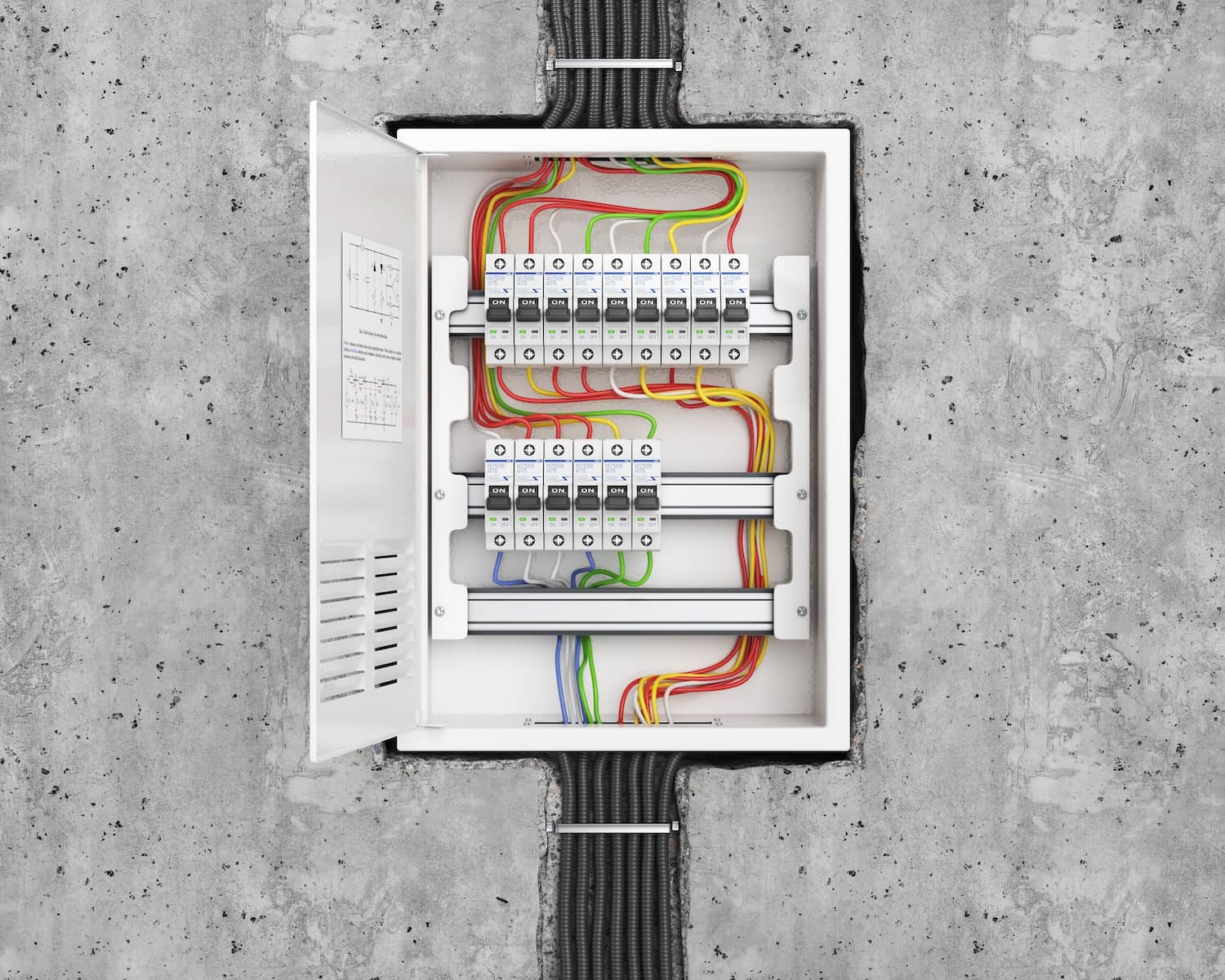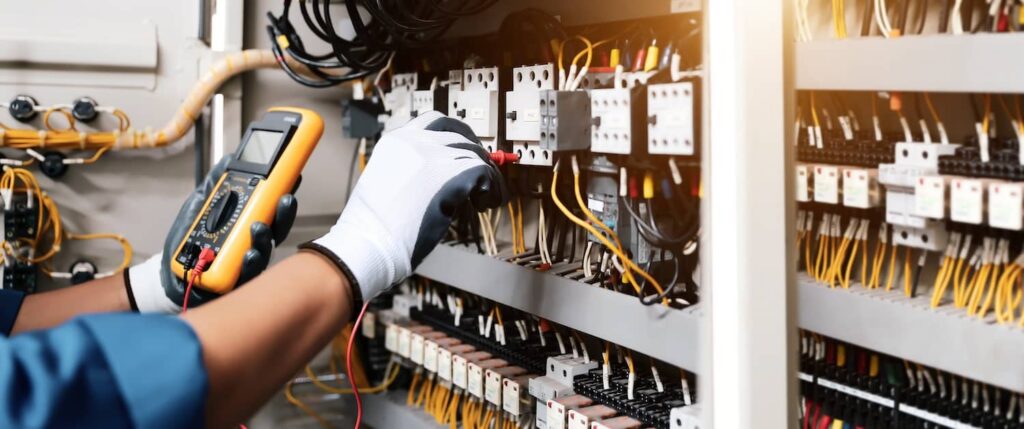
Do you find your circuit breaker tripping over and over? We get it—it’s frustrating and concerning when parts of your home lose power randomly. Circuit breakers cut electricity when dangerous faults occur, playing a critical safety role. While occasional tripping is expected, repeated trips or complete loss of power likely signal an underlying issue needing attention.
Whether the circuit breaker itself needs repairs or it’s signaling a different issue, this guide will help you solve the mystery once and for all. We’ll cover red flags to keep an eye out for and share methodical troubleshooting methods to help you get to a final diagnosis. With clear, step-by-step advice, you’ll be able to restore continuous, reliable power or identify when an expert’s help is necessary.
What to Expect From Your Circuit Breaker
Circuit breakers are an essential safety feature in any home’s electrical system. But what exactly do they do? In simple terms, a circuit breaker monitors and controls the electrical flow to your home’s circuits.
Each circuit powers a specific section of lights, outlets, and appliances. The breaker switches off power to a circuit when it detects potentially hazardous conditions like overloads, short circuits, or ground faults. This prevents fires, shocks, and equipment damage.
There are a few common reasons that can cause a circuit breaker to trip. Having too many devices plugged in can overload the circuit beyond its capacity, triggering the breaker. Faulty wiring that is exposed, damaged, or improperly installed can lead to short circuits making the breaker trip. Old or malfunctioning appliances that are defective and pull too much power can cause surges that trip the breaker. Furthermore, external issues like problems with utility service, weather events, animals, or accidents can affect your home’s electrical flow and cause the circuit breaker to trip.
Resetting the breaker safely restarts the flow of power. However, if underlying conditions like overloads persist, the circuit breaker will just trip again. The goal is to identify and address the root cause of the tripping.

Safety Considerations
Before diving into troubleshooting, there are a few crucial safety precautions to remember. Electricity can be dangerous when handled improperly. Make safety your top priority during this process.
Start by locating your electrical panel and the main shut-off switch. This allows you to cut power to the entire home if needed. Also, gather basic safety gear like rubber gloves, eye protection, and insulated tools. Never work on electrical components with wet hands or while standing near water.
When resetting breakers, carefully switch them fully to the Off position before turning back On. Double-check that the right breaker is linked to the problematic circuit by switching it off and on to observe the effects. Clearly label each breaker to simplify this process.
Before disconnecting any appliances, be sure they are unplugged and powered down. Use extreme caution when dealing with permanently wired-in lighting fixtures, outlets, and devices. Damaged cords and plugs can expose live wires, posing shock risks. If in doubt, contacting a professional is wise. Remember to work methodically and patiently. Rushing through electrical repairs often leads to mistakes and risks injury!
Steps for Troubleshooting Success
Once you consider all aspects of electrical safety for the project, it’s time to find out why your circuit breaker is tripping. Follow these steps carefully to get to the bottom of it:
1) Reset the Circuit Breaker: Start by flipping the tripped breaker fully to Off and then back to On. This resets it and restores power. If it immediately trips again, the underlying problem still exists.
2) Identify and Disconnect Devices: Unplug all appliances, lights, and devices connected to that circuit one by one. Be sure to also power down any hardwired fixtures by flipping the appropriate breakers. The goal is to disconnect everything on the circuit.
3) Selectively Reconnect: With the circuit empty, begin carefully reconnecting and resetting the breaker after each device. If the breaker trips when reconnecting something, that device is likely the culprit. Mark it for further inspection.
4) Check for Overloads: If the breaker didn’t trip after reconnecting each device one by one, there are too many things drawing power from that circuit overall. Try redistributing devices strategically across additional circuits to reduce the load.
5) Inspect Components: Closely inspect all wiring, outlets, switches, and connected devices on the circuit for damage. Contact an electrician immediately if there are any signs of failure like scorched outlets, damaged cords, loose connections, or flickering lights.
6) Consider External Factors: Note any recent storms, strange utility occurrences, or nearby construction that could have affected your electrical system and led to the trips. Contact your utility provider if you suspect external influences are at play.
Carefully moving through these steps can methodically lead you to the root of the tripping problem. Take your time and don’t cut corners during troubleshooting!

Preventative Maintenance Tips
While troubleshooting is important, prevention is ideal. Perform these routine maintenance steps to avoid future issues:
- Ensure your electrical system can handle the current load. Consult an electrician to evaluate capacity and add circuits if needed.
- Periodically inspect appliances and devices for damaged cords, plugs, or overheating. Upgrade older, straining appliances.
- Use outlet testers to confirm proper grounding and safe operation. Check exterior outlets and wiring for damage or animal interference.
- During storms, unplug devices to avoid power surges. Consider installing surge protectors.
- Routinely flip each breaker off and on to ensure proper function and clear debris. Replace breakers over 10 years old or showing signs of damage.
When to Call a Professional
Certain alarm bells are clear indicators that a situation isn’t within the average homeowner’s scope of knowledge. For instance, if you open your circuit breaker panel after tripping and find scorch marks, burnt wiring, buzzing sounds, or a burning odor, power down immediately. These are signs of potentially hazardous electrical faults needing urgent attention. Don’t reset breakers or attempt to troubleshoot issues in these situations.
Likewise, if you uncovered damaged appliances or equipment with frayed cords, exposed wires, or cracked plugs. Any observed sparks, flickering lights, or outlets that give you a shock also warrant an SOS call to a pro.
Troubleshooting requires working methodically through all potential causes. If our outlined steps haven’t resolved your tripping breaker, a fresh set of professional eyes may spot something you missed. Electricians have specialized tools and expertise to fully evaluate your electrical system.
Final Thoughts
When a circuit breaker is tripping repeatedly, there’s an issue that needs attention. This guide covers the necessary steps to safely troubleshoot and restore continuous electricity.
Understanding common trip causes allows you to check each possibility—from overloads to faulty equipment. While a tripping breaker can be frustrating, it protects you and your home from harm. To schedule an in-depth inspection of your home’s electrical system or the entire residence, reach out to Boggs Inspection Services in Olympia, WA, and surrounding areas today.



